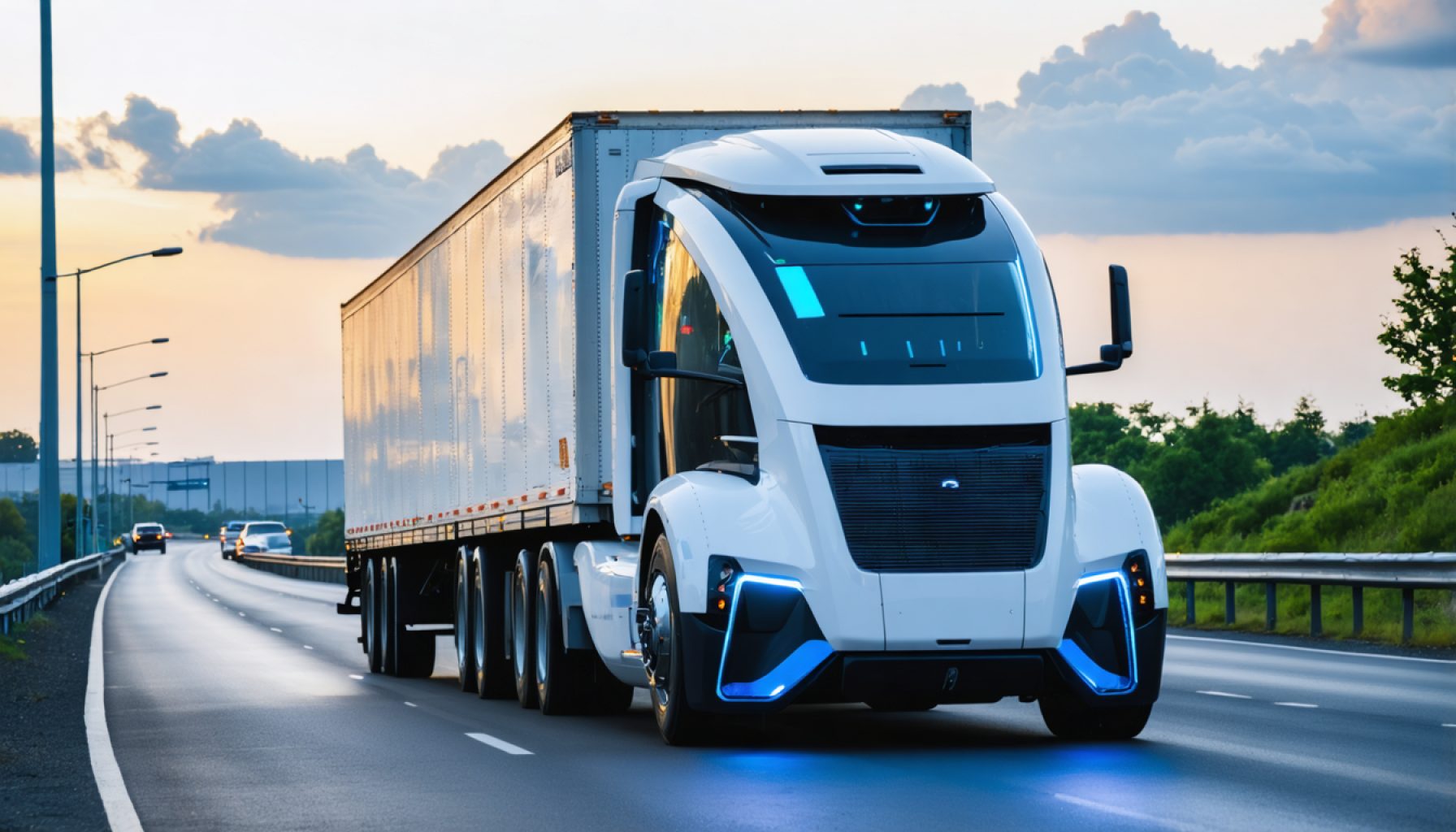- Heavy-duty autonomous vehicles are rapidly transforming industries, with a projected market value of $989 billion by 2031.
- Advanced technologies like LiDAR, GPS, and sensors are crucial for these vehicles, ensuring safety and operational efficiency.
- Major companies such as Volvo, General Motors, and BMW are leading the development of autonomous transportation solutions.
- The sector faces challenges, including rising raw material costs and the absence of global standards for testing autonomous technologies.
- Europe spearheads R&D in autonomous public transportation, setting a trend for global adoption of autonomous buses and shuttles.
- Embracing heavy-duty autonomous vehicles is vital for businesses seeking to leverage operational savings and efficiency improvements.
Picture a future where colossal autonomous vehicles traverse rugged terrains and bustling city streets with precision and ease. This once-distant vision is swiftly becoming reality as the global heavy-duty autonomous vehicle market gears up to revolutionize industries worldwide. With a staggering projected value of nearly $989 billion by 2031, these self-driving behemoths promise to redefine operational efficiency across multiple sectors, from logistics to construction.
The heart of these modern marvels beats with innovation. Cutting-edge technologies like LiDAR, GPS, and multifaceted sensors equip these autonomous giants with an acute awareness of their surroundings. They propel themselves deftly through intricate environments, all the while ensuring safety and effectiveness with minimal human oversight. Engine variants—ranging from robust internal combustion engines to the eco-friendly allure of electric propulsion—add versatility to their design.
It’s a fiercely competitive arena. Automotive titans such as Volvo, General Motors, and BMW are at the forefront, forging a path for a new era of transportation. The development of such vehicles sees notable advancements, like the strategic alliance between Volvo Autonomous Solutions and Aurora to introduce fully autonomous long-haul trucks in the United States, underscoring North America’s pivotal role in the market’s growth.
However, the journey is not without its bumps. Economic challenges loom large, with rising raw material costs and a persistent lack of global standards for testing autonomous technologies. As markets waver, the volatility underscores a critical necessity for innovation to meet the demands of this burgeoning sector.
Despite these hurdles, regions like Europe have fortified their leading stance through substantial R&D investments in autonomous public transport. The region’s commitment highlights a global trend forecasted to propel autonomous buses and roboshuttles into everyday use, powered by relentless curiosity and technological progress.
In summary, the advent of heavy-duty autonomous vehicles heralds a new frontier. As industries pivot to embrace this technological marvel, they unlock potential savings and efficiencies that will redefine our approach to transportation and industry dynamics. The lesson is clear: for businesses aiming to thrive, embracing autonomy in heavy-duty vehicles isn’t just an option—it’s an evolution.
The Future of Heavy-Duty Autonomous Vehicles: A Game-Changer in Global Transportation
Unveiling the Potential of Heavy-Duty Autonomous Vehicles
As the heavy-duty autonomous vehicle market races towards an impressive projected value of $989 billion by 2031, businesses across the globe are eagerly eyeing the transformative impact these vehicles will have on various industries such as logistics, construction, and public transport. Here’s a deeper dive into the technologies, market trends, challenges, and opportunities that define this burgeoning industry.
Advanced Technologies Propelling the Revolution
Heavy-duty autonomous vehicles are powered by cutting-edge technologies that ensure precision, safety, and efficiency:
– LiDAR and Sensors: These provide a 360-degree view of the vehicle’s surroundings, crucial for navigating complex environments.
– GPS Integration: Offers accurate real-time positioning, making it easier for vehicles to traverse both urban and rural landscapes.
– Engine Variants: Vehicles range from traditional internal combustion engines to more sustainable options like electric propulsion, which reduces carbon footprints and operational costs.
For more on automotive innovation, visit Volvo Cars.
How-To Steps for Integrating Autonomous Vehicles in Industry
1. Assess Needs: Determine which sections of your operation could benefit most from automation.
2. Pilot Programs: Start with a controlled implementation to test feasibility and ROI.
3. Training Programs: Invest in training for employees to oversee and manage autonomous fleets.
4. Partnerships: Collaborate with technology providers like Aurora to enhance vehicle capabilities.
Real-World Use Cases and Industry Trends
– Logistics and Freight: Autonomous long-haul trucks are projected to significantly cut down delivery times and costs. Companies like General Motors are blazing trails in this segment, focusing on long-distance shipping efficiencies.
– Construction: Self-driving heavy machinery can streamline operations, reducing labor costs and minimizing human error on job sites.
– Public Transport: Europe’s heavy investment in R&D highlights a growing trend towards autonomous buses and roboshuttles, promising safe and efficient urban transport systems.
Addressing Market Challenges
Despite optimism, the industry faces critical hurdles:
– Rising Material Costs: Economic fluctuations can impact manufacturing costs, necessitating budget adjustments and strategic sourcing.
– Lack of Global Standards: A coordinated effort toward creating testing standards for autonomous technologies is crucial for market stability and safety assurance.
Key Insights and Industry Predictions
– Robust Growth in North America: The strategic alliances forming in the U.S., notably between Volvo Autonomous Solutions and regional partners, underscore North America’s impact on global market expansion.
– Potential for Environmental Benefits: The shift towards electric propulsion engines aligns with global sustainability goals, offering reduced emissions and operational efficiencies.
Controversies & Limitations
– Regulatory Challenges: Varying regulations globally pose a significant obstacle. Harmonization is key to widespread adoption.
– Job Displacement: The move towards automation raises concerns about job loss, necessitating policy intervention and workforce retraining.
Actionable Recommendations
1. Investment in R&D: Continual innovation is vital for competitive advantage.
2. Engage with Policy Makers: To influence regulatory frameworks that support autonomous tech adoption.
3. Focus on Sustainability: Prioritize eco-friendly technologies to align with global environmental goals.
Conclusion: A Call to Action
For businesses looking to thrive in the evolving transportation landscape, embracing the potential of heavy-duty autonomous vehicles is not just a choice; it’s an imperative step towards future-proofing operations.
For more insights into autonomous vehicle trends, explore BMW and General Motors.







